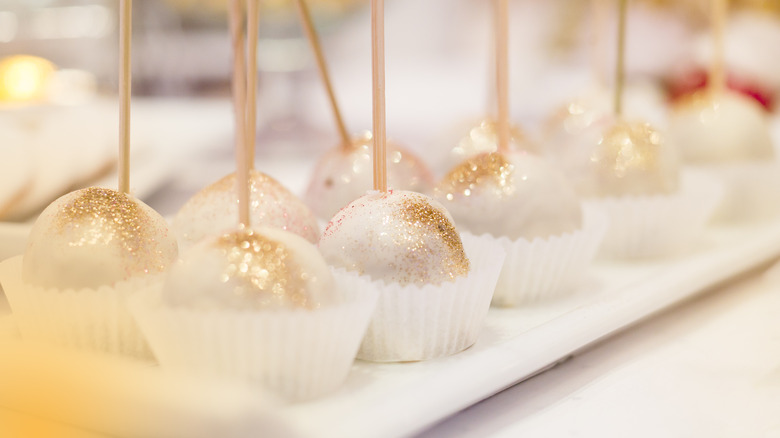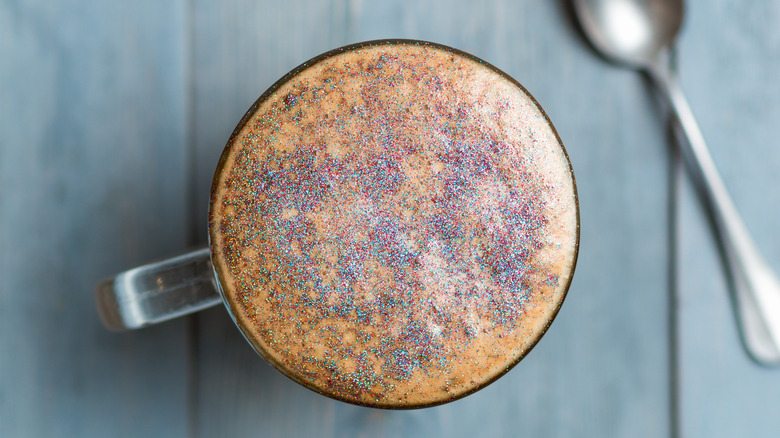We Finally Know What Edible Glitter Is Made Of
Edible glitter may not be a normal pantry staple, but it can certainly be useful to have on hand when you want to decorate a cake or give your cocktail an extra wow factor. Much like food coloring, it's added to desserts and drinks purely for aesthetic purposes, yet it's entirely edible. But despite the fact that edible glitter looks and functions a lot like craft glitter, its components are completely different.
According to the University of Washington, craft glitter is made out of tiny pieces of PET or PVC plastic that are covered in either aluminum or another reflective coating. Edible glitter on the other hand is made with a long list of ingredients that include sugar, cornstarch, food coloring, and other food-safe additives like acacia and maltodextrin per the U.S. Food and Drug Administration. Instead of aluminum, edible glitter gets its sheen from mica-based pigments, which aren't technically reflective, but rather pearlescent, creating a similar glittery effect. Ultra-refined edible glitter is also known as luster dust.
Is edible glitter actually safe to eat?
Glitter labeled as "edible" is considered safe for consumption, but glitter only labeled as "nontoxic" is not food-grade, even if you find it in the baking section of a website or store. As The Washington Post explains, nontoxic does mean you can safely ingest a small amount of it, but this glitter is not necessarily made with edible ingredients and is therefore not FDA-approved or recommended.
Aside from being labeled as "edible" or "nontoxic," you can also determine the safety of your glitter by looking at the ingredients. Food products are federally required to include an ingredients list, so if there isn't one present at all, it's a telltale sign that the glitter isn't edible. If there is an ingredients list but you don't see sugar or anything recognizable, look for an expiration date and lot number. According to edible glitter maker The Sugar Art, these will always be included on true edible glitter or luster dust, so if they're missing, you're probably holding nontoxic glitter, not edible glitter.
How to make your own edible glitter
You can easily get food-grade glitter online and in stores, but if you're having trouble finding the perfect color or simply want control over all the ingredients that go into it, there's always the option to make your own. To do so, all you need is cornstarch, water, and food coloring.
Stir your ingredients together in a saucepan over the stove, add the food coloring, and spread a thin layer of the resulting mixture on some plastic wrap. When it dries, run it through a blender or food processor and you'll be left with little sparkly shards of edible glitter.
Because there's no mica, homemade edible glitter isn't quite as shiny as the store-bought kind. It also does not work the same way in drinks because it's sugar-based rather than mineral-based, so it'll dissolve rather than add sparkle. However it's still effective when used for decorating desserts, and more importantly, all of its ingredients are fully edible.


